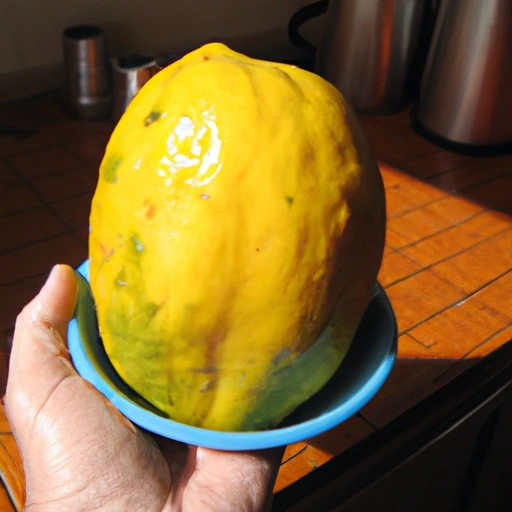Pawpaw
Description

The pawpaw, also known as Asimina triloba, is a small deciduous tree native to the southeastern United States. The fruit it bears is the largest edible fruit indigenous to the continent. Pawpaws have a custard-like texture and a complex flavor profile, often described as a combination of banana, mango, and melon. Pawpaws have a thin skin that ranges from green to a brownish-yellow when ripe, with a creamy, yellowish flesh peppered with a few large, brown seeds.
Common uses
Pawpaws are often consumed fresh, straight from the tree. However, they can also be used in a variety of dishes. Due to their creamy texture, they make an excellent addition to smoothies, desserts, and baked goods. Pawpaw pulp can be frozen for later use, and the fruit is sometimes made into jams, jellies, and sauces.
Nutritional value
Calories
A 100-gram serving of pawpaw fruit contains approximately 80 calories (335 kJ).
Protein
Pawpaws offer around 1.2 grams of protein per 100 grams.
Fat
The fruit is low in fat, with about 1.1 grams per 100 grams.
Carbohydrates
Pawpaws are rich in carbohydrates, providing about 18.8 grams per 100 grams.
Vitamins
Pawpaws are an excellent source of vitamin C and also contain significant amounts of vitamins A and B6.
Minerals
The fruit is a good source of minerals such as magnesium, iron, zinc, and manganese.
Health benefits
Pawpaw is known for its antioxidant properties, due in part to its high vitamin C content. It also contains numerous phytochemicals and is rich in dietary fiber, which can aid in digestion and promote a healthy gut microbiome. Additionally, the fruit is a good source of several essential nutrients that contribute to overall health and well-being.
Potential risks
While pawpaws are generally safe to eat, they may cause an allergic reaction in some individuals. As with any new food, it is recommended to try a small amount first. The seeds and skin of the fruit are not edible and should be discarded.
Common recipes
Pawpaw fruit can be used in a variety of recipes, including pawpaw bread, pawpaw custard, and pawpaw ice cream. It is also a flavorful addition to salads and can be made into a unique pawpaw salsa.
Cooking methods
While pawpaws are commonly eaten raw, they can also be baked, blended, or cooked into a sauce. When heating pawpaws, it's important to do so gently to preserve their delicate flavor.
Pairing with other ingredients
Pawpaws pair well with creamy or dairy-based ingredients, such as yogurt or ice cream. They also complement other tropical flavors like coconut, pineapple, and vanilla.
Summary
Pawpaw is a versatile and nutritionally rich fruit with a unique flavor profile that can enhance various dishes. Its historical significance and culinary potential make it a fruit worth exploring in both traditional and innovative recipes. From sweet desserts to savory concoctions, the pawpaw fruit invites chefs and food enthusiasts to discover its untapped potential in the culinary world.